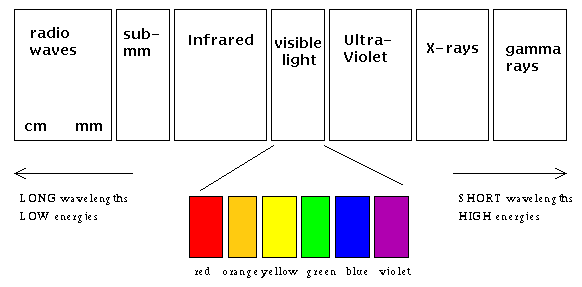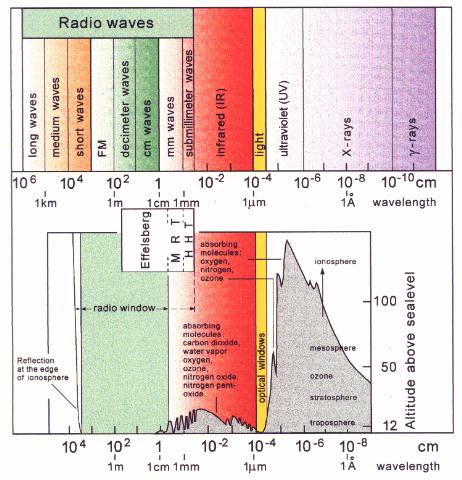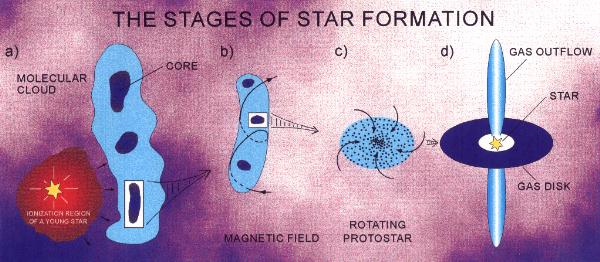
| SUBMILLIMETER WAVE
Submillimeter Wave :
Submillimeter wave astronomy is a relatively new branch of astronomy that studies celestial objects using the submillimeter band of the electromagnetic spectrum, which ranges from 0.1 mm to 1.0 mm (300 GHz to 3000 GHz). This band, which lies between the far infrared and high-frequency radio bands, contains valuable astonomical information in both continuum and molecular spectral lines, but has been unavailable to astronomers until recently because most of the radiation is blocked by the Earth's atmosphere. In order to overcome this barrier, submillimeter observatories are usually placed at high altitude.
Band 8 (385 to 500 GHz, submillimeter-wave)
125000 / 108 (beads in mala) = 1157.4074
1157.4074 / 3 (waves) = 385.80246
385.80246 submillimeter wave
Band 8 (385 to 500 GHz, submillimeter-wave)
Using submillimetre observations, astronomers examine molecular clouds and dark cloud cores with a goal of clarifying the process of star formation from earliest collapse to stellar birth.
In our EVeryday human experience, we see that light has measurable properties. It has intensity (brightness), and it has color. The intensity gives an indication of the number of light "waves" or "particles" (called photons) coming from an object. The color is a measure of the energy contained in each photon. The colors of the rainbow (red, orange, yellow, green, blue, violet) denote the energies of light waves that our human eyes can see and interpret. This "color" or "energy" range is called the visible spectrum. Red photons of light have the least energy, violet photons carry the most energy. Until fairly recently, all of our astronomical knowledge came from the detailed study of visible light from astronomical objects.
The visible spectrum is only a tiny portion of the total electromagnetic (EM) spectrum, however.
Notice that radio, TV, and microwave signals are all light waves, they simply lie at wavelengths (energies) that your eye doesn't respond to. On the other end of the scale, beware the high energy UV, x-ray, and gamma-ray photons! Each one carries a lot of energy compared to their visible- and radio-wave brethren. They're the reasons you should wear sunblock, for example.
When we look at the Universe in a different "light", i.e. at "non-visible" wavelengths, we probe different kinds of physical conditions -- and we can see new kinds of objects! For example, high-energy gamma-ray and X-ray telescopes tend to see the most energetic dynamos in the cosmos, such as active galaxies, the remnants from massive dying stars, accretion of matter around black holes, and so forth. Visible light telescopes best probe light produced by stars. Longer-wavelength telescopes best probe dark, cool, obscured structures in the Universe: dusty star-forming regions, dark cold molecular clouds, the primordial radiation emitted by the formation of the Universe shortly after the Big Bang. Only through studying astronomical objects at many different wavelengths are astronomers able to piece together a coherent, comprehensive picture of how the Universe works.
Submillimeter-wavelength (0.3 - 1.0 mm) astronomy is perhaps the last wholly unexplored wavelength frontier. Why? Submillimeter ("microwave") astronomy is technically very difficult due to the sheer complexity of the instrumentation and to the "opaqueness" of the atmosphere in microwave light.
The Submillimeter (a.k.a. "microwave") frequency band lies between the regions easily observed by radio telescopes and optical telescopes. It comes as no surprise, then, that submillimeter astronomy borrows techniques used by both optical and radio astronomers. The visual appearance and operation of the telescope is that of a radio telescope, although it is sheltered in an enclosure like an optical telescope. Continuum-mode observations are done using specialized heat-sensing detectors called bolometers, which stem from infrared techniques. Spectral-line measurements, incorporating very high wavelength-resolution, use heterodyne receivers somewhat resembling those found in lower-frequency radio receivers. Such high frequency receivers (approaching 1 Terahertz, about 10,000 times higher frequency than the average FM radio!) are very difficult to manufacture, howEVer. The recent production of sensitive receivers for astronomical purposes (at the University of Arizona (SORAL), among other places) has led recently to the opening of this wavelength band for the first time.
Ground-based submillimeter observations are difficult for another reason: the opaque-ness (opacity) of the atmosphere at microwave wavelengths.
Here's another (prettier) plot of the electromagnetic spectrum. The different color-coded classifications reflect segments of the EM spectrum which require different techniques for observation.
The lower plot focuses on a portion of the spectrum from radio wavelengths to x-rays. The gray-filled line demonstrates at what height in the Earth's atmosphere incoming waves of light are blocked. Notice that the Earth's atmosphere blocks high-energy light (UV, X-rays, Gamma rays) dozens of miles above our heads. To observe astronomical X-ray sources, one must therefore launch astronomical satellites above the atmosphere.
At the opposite extreme, most radio- and visible- wavelength observations are unimpeded by the atmosphere; the incoming photons can travel right through. The atmosphere is transparent at such wavelengths. Transparency is important since astronomers must be able to look through the atmosphere to observe astronomical objects.
At submillimeter wavelengths, ambient atmospheric water vapour will absorb (block) incoming light. At low elevations, where most water vapour resides, the atmosphere is very opaque at submillimeter wavelengths; the abundant water vapour absorbs any incoming submillimeter photons before they can reach the telescope. At higher elevations, however, the water content decreases substantially. By minimizing the atmospheric water vapour, one improves the transparency of the atmosphere and makes astronomical observations possible. It is for this reason that infrared and submillimeter observatories are built as high as possible; by being above some of the atmosphere, the radiation from astronomical sources is much less attenuated.
To demonstrate how important a dry site is to a submillimeter observatory, look at the following plot :
The transparency (transmission efficiency) of the atmosphere at microwave frequencies is plotted for two amounts of atmospheric water: 1 mm and 4 mm of precipitable water vapour. This term deserves an explanation: 4 mm of PWV means that if EVery molecule of water vapour above you could be condensed into an ocean, it would be 4 mm deep! 4 mm of water vapour is in fact still pretty dry, but EVen there, the atmosphere blocks all but 2% of the light at 0.3 mm (800 GHz). Moved to a very high, dry site under excellent conditions, you might expect to see 1 mm of PVW; and the atmosphere would pass about 25% of the light at 0.3 mm. Lower frequency observations (below 200 GHz, a.k.a "millimeter"-wave astronomy) can be performed under conditions when submillimeter observations are impractical or impossible.
Submillimeter astronomy promises to yield a new view upon the Universe we live in, almost certainly shedding light upon many of the outstanding questions in modern astronomy.
Among the most pressing of these questions is how stars are formed. Stars are born from the material between other stars. In some regions of space, the density of gas and dust is much higher than the norm, and atoms are sufficiently shielded from destructive high-energy photons to interact with other atoms to form simple molecules. In the highest density central regions of such molecular clouds, material is so well shielded that delicate, complex molecules can form. It is from these molecular cloud cores that new stars (including our own Sun) are born. The study of the chemistry in such regions can not only lead to an improved understanding of the physical conditions in such a "stellar nursery", but also can provide clues to the composition of other star-forming (and possibly planet-forming and life-giving) solar systems. Such studies may help astronomers understand the conditions from which life evolved on Earth.
Because the star forming process occurs behind so much intervening dusty material, visible-light telescopes cannot see what is happening. By moving to the infrared, sub-millimeter and millimeter wavelength regions, where the effects of this obscuration are nearly negligible, astronomers can begin to directly probe regions where stars are actively being born.
Understanding the star forming process has many astronomical consequences. Knowing what physical conditions are needed to form molecular cloud complexes is important in understanding the star-forming EVolution of galaxies, both in the current age and, perhaps most importantly, when galaxies were first forming. The understanding of how a single star forms from a molecular cloud, then, has EVen cosmological implications.
|



